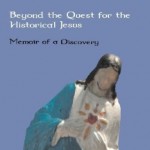 Continuing Thomas Brodie’s Beyond the Quest for the Historical Jesus: Memoir of a Discovery
Continuing Thomas Brodie’s Beyond the Quest for the Historical Jesus: Memoir of a Discovery
This post follows on from my earlier one on Chapter 8 where Brodie is beginning to appreciate the nature of the literary artistry of the biblical books.
Chapter 9
The Third Revolution Deepens: 1992-1995
.
If a Jesus narrative were based on the Elijah-Elisha story (see “That Is An Important Thesis“) one had to ask why. Would not the story of Moses or David have been more appropriate as a model? This question perplexed Brodie until his further studies on Genesis opened up a new awareness of the nature of the biblical literature. But let’s digress a moment to consider an objection that has on some theologian’s blogsites recently been flung at Brodie’s arguments since he has claimed they lead to a “mythicist” conclusion.
Parallelomania: the facts
“Parallelomania” has once again been flung as a dismissive epithet by a number of theologians and religion scholars at Christ myth arguments in general and Thomas Brodie’s arguments in particular, so it is worth taking a moment to revisit the article that introduced the notorious notion of “Parallelomania”. It can be read on this Vridar.org page; I have taken excerpts from it in the following discussion.
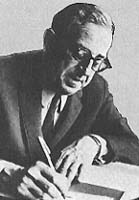
I don’t think James McGrath has ever had the time to read that article that he invites others to read. If he had, he would know that its author (Samuel Sandmel) points out that by “parallelomania” he means plucking passages from the vast array of, say, rabbinical literature or from a work of Philo’s out of their broader contexts and using them (thus decontextualized) to claim they have some direct relevance to similar-sounding passages in the New Testament. That is not what Brodie is doing. Sandmel even explains that the sort of detailed analysis done by Brodie to explore questions of literary indebtedness is indeed justified and is not to be confused with something else that he is addressing.
The key word in my essay is extravagance. I am not denying that literary parallels and literary influence, in the form of source and derivation, exist. I am not seeking to discourage the study of these parallels, but, especially in the case of the Qumran documents, to encourage them. . . . .
An important consideration is the difference between an abstract position on the one hand and the specific application on the other. . . . . it is in the detailed study rather than in the abstract statement that there can emerge persuasive bases for judgment. . . . . The issue for the student is not the abstraction but the specific. Detailed study is the criterion, and the detailed study ought to respect the context and not be limited to juxtaposing mere excerpts. Two passages may sound the same in splendid isolation from their context, but when seen in context reflect difference rather than similarity.
Note the problem with taking excerpts from a corpus of literature and using them as parallels with something else. This results in
confusing a scrutiny of excerpts with a genuine comprehension of the tone, texture, and import of a literature.
In Brodie’s analyses, on the other hand, it is as much the tone, texture, and import of the respective documents that are being analysed as the individual words and phrases.
One of the greatest sins of “parallelomania” is
the excessive piling up of . . . passages. Nowhere else in scholarly literature is quantity so confused for quality . . . . The mere abundance of so-called parallels is its own distortion . . . .
I recently posted chapter 7 of Brodie’s book to demonstrate that Brodie does not make his case by a mere piling up of matching words or ideas. The structure, the theme, the context, the motivation — these are all part of Brodie’s argument.
Finally, the crowning sin of parallelomania is one that I not too long ago identified in the work of historian Michael Grant about Jesus. I’ll first quote Sandmel:
On the one hand, they quote the rabbinic literature endlessly to clarify the NT. Yet even where Jesus and the rabbis seem to say identically the same thing, Strack-Billerbeck manage to demonstrate that what Jesus said was finer and better. . . . . Why, I must ask, pile up the alleged parallels, if the end result is to show a forced, artificial, and untenable distinction even within the admitted parallels?
Grant followed many theologians who insist that though the golden rule was known in some form among the rabbis (and in other civilizations), Jesus expressed it better than anyone else.
Sandmel’s article on “parallelomania” is actually an endorsement of the sort of work being done by scholars who work seriously on literary analysis of texts and a warning against the sins found too often among the mainstream scholars. Unfortunately some theologians, McGrath included in his Burial of Jesus, are on record as saying that literary analysis has no place in the work of historical inquiry. On the contrary, without literary analysis the historian has no way of knowing how to interpret literary documents.
It is that very detailed study that Sandmel said is necessary, and the study of the context, both immediate context and the wider cultural context of literary practices of the day, that Brodie is undertaking. He is not plucking passages out of context from disparate sources and making an abstract claim that they can be read as a “parallel” to, and by implication source of, what we read in the gospels. (Such “extravagance” is the characteristic fault of “astrotheology”, but not of the scholarly work of Brodie and MacDonald.)
This is not the same as saying that MacDonald’s and Brodie’s arguments are necessarily correct. They still need to be studied and engaged with. There may be alternative explanations for some of the data they have addressed and believe points to literary borrowing. But it is not particularly scholarly to simply reject an argument one does not like by dismissing it with a pejorative label.
Now back to Beyond the Quest
Thomas Brodie explains that he had a special interest in the final form of the book of Genesis, and in particular its meaning as a finished work of literature. Since 1753 when Astruc conjectured the possibility that various features of Genesis could be explained best if it had been put together like a patchwork quilt from various sources, scholars had focused most of their efforts on uncovering those sources. And if that hypothesis was correct (a hypothesis that culminated in today’s Documentary Hypothesis) then it was unlikely Genesis could ever be understood as a finished work of literary artistry.
Brodie’s problem with this approach to Genesis was twofold:
There were two main problems with these hypotheses. First, they did not work; in fact, they led to endless confusion about lost documents and traditions, and sometimes generated proposals that were incoherent. Second, they distracted attention from the one thing that was certain — the present form of the book of Genesis, essentially the only Genesis document that has ever been verified. (p. 90)
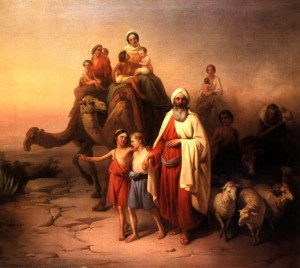
In an earlier post we touched on Brodie’s contact with Brevard Childs. That contact came about through Childs’ willingness to assess an article by Brodie arguing for strong similarities between the Genesis account of Jacob’s return from Syria (Genesis 31-33) and Jeremiah’s account of the return of the exiles (Jeremiah 30-31). If McGrath is correct about Brodie’s arguments then we would expect Childs to have ridiculed Brodie’s effort as “parallelomaniacal” but instead we read that Childs “appreciated the similarities”. The problem for Brodie was that Childs asked how he knew it was the author of Genesis who used Jeremiah and not the other way around. The question led Brodie into a deeper study of Genesis and the prophets.
In exploring the unity and artistry of Genesis one detail one feature (sometimes prompted by the observations of a number of other researchers) began to impress itself upon Brodie:
the book was carefully organized into a series of paired texts — beginning most obviously with a pair of creation stories (Gen. 1-2), a pair of sin stories (Adam and Eve; Cain and Abel), and two complementary genealogies (4.17-26; and ch. 5). . . . (p. 91)
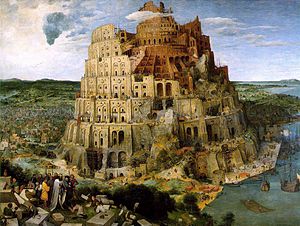
However, it looked at first as if that DNA double helix broke when one reached Genesis 11, the story of Babel.
Babel was unique in the Bible, the one and only tower reaching for the sky. There seemed to be nothing paired with it, in fact nothing in the nearby text that was remotely like it. Babel stood out in the imagination like the ultimate unforgettable skyscraper, but the second part of Genesis 11 was just a boring genealogy.
Brodie looked more closely.
Oddly, the ending after the genealogy — the end of Genesis 11 — had some of the same phrasing as the beginning of the Babel story. And the numbers in the genealogy were curious: overall they kept getting smaller. In fact, looking at it more closely, it was clear that while the genealogy had started as something very imposing, it ended as a fragile family going nowhere. And so the balance between the two parts of Genesis 11 eventually emerged: there were two collapses, one of the great city of Babel, the other of the imposing family; one of the outside world; the other closer to home.
The effect of the two evocations of collapse was to heighten the sense of the fragility of life, to show human striving as ending in a place that is desperately bleak. . . . But the deadly pairing has a purpose. It is the background to the story of the faith of Abraham.
Eventually it became clear that the pairing filled all of Genesis, one of several patterns that, despite the great diversity, formed the book into a profound unity. . . . .
Not that the reasons for the pairing were clear to Brodie, but he was convinced of this structure. The two opening creation stories, for example, are connected by such joins as:
Genesis 1 . . . Genesis 2 . . .
In the beginning . . . In the day . . .
God . . . Yahweh God . . . (the latter name associated with God’s earthly compassion-Ex.3:15)
Created . . . made . . . (made, a more mundane word than created)
The heavens and earth . . . earth and the heavens . . . (priority is changed to earth)
Brodie also came to sense that Genesis was very tightly united to the rest of the narrative that followed, right through to the fall of Jerusalem in 2 Kings. Interestingly, a growing number of scholars (I think more from Europe than America) have in recent years begun to argue that the Primary History, Genesis to 2 Kings, was composed by a single author as a single work. (These are my own comments, not Brodie’s.) At least one has suggested that the different books approximate something of the structure of the Histories of Herodotus. All of these studies are yet in their infancy, I think.
What surprised me was the degree of that unity. By taking a number of soundings, it began to become clear, as others had suggested, that Genesis was tied soul and sinew to the entire epic, right to the fall of Jerusalem.
It was also tied to the Elijah-Elisha narrative. (p. 92)
Why choose the Elijah-Elisha narrative for Jesus?
Brodie’s understanding of the relationship of the Elijah-Elisha narrative in 1 and 2 Kings to the remainder of the Primary History (Genesis to 2 Kings) is so unexpected and different from any other analysis that, to be appreciated, requires “patience”. Revisit the subsection It needed patience, patience, patience in an earlier post in this series to see the significance of that. (I’m not saying that one must agree with Brodie’s argument or be accused of impatience. Appreciation of an argument does not imply acquiescence to it. Engagement, however, does require appreciation or understanding.)
Brodie saw the narrative of Elijah and Elisha being constructed and adapted out of key episodes between Genesis and Kings (e.g. Noah’s Flood, the Sinai revelation after the Exodus . . .).
The result: the Elijah-Elisha narrative is a ready-made synthesis of the Old Testament’s foundational epic (Genesis-Kings), of its narrative and theology. If you were writing a narrative about Jesus, and wanted to ground that narrative in the older scriptures, you could scarcely find a more suitable foundation than the ready-made synthesis, the Elijah-Elisha narrative. (p. 93)
The significance of this for Jesus?
It showed Jesus not just as an individual belonging to one generation, but as containing in himself the stories of all humans, right back to the beginning, and even as containing or evoking the Genesis story of creation. (p. 93)
Brodie’s observations were published as The Crucial Bridge: The Elijah-Elisha Narrative as an Interpretive Synthesis of Genesis-Kings and a Literary Model for the Gospels.
If you enjoyed this post, please consider donating to Vridar. Thanks!

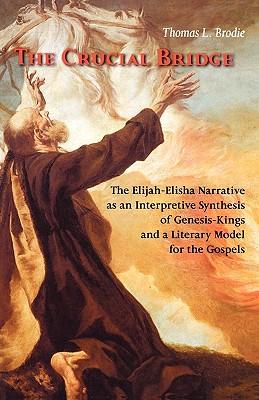
Let me get this straight: “parallelomania” was invented in the 1830s by a French theologian to lampoon another theologian whose thesis — that “Epistle to the Romans” was partially inspired by “The Wisdom of Solomon” — he did not agree with. Very scholarly behavior!
Sandmel revives this ridiculous, childish term in 1962, not because he agrees with the French theologian — scholars now have no problem acknowledging the influence of Wisdom on Romans — but to instead criticize Strack-Billerbeck’s “Commentary on the New Testament from the Talmud and the Midrash” for finding parallels in rabbinic literature to the gospels.
Modern scholars like McGrath agree with both the position of the scholar whom the word “parallelomania” was invented to ridicule, and Sandmel’s criticism of the approach of Strack-Billerbeck, yet they continue to use “parallelomania” as if the original 1830s usage was correct and appropriate.
This kind of nonsense is so typical of Biblical studies. It is very reminiscent of Maurice Casey and others utterly misunderstanding E.T. Hall’s “High Context Culture,” yet pretending that their misinterpretation is the correct one, and then using their misinterpretation to lampoon and ridicule people they disagreed with. Ignorance is bliss, but never so blissful as it is in Biblical studies.
Maybe I should read Samdel’s article more closely, but I did not think he was using it to ridicule. I thought he presented a well-reasoned and supported argument. It is not productive to merely scoff at ideas we think are without substance, as McGrath and others do. One thesis I believe is without any substance is the pop belief in the lost civilization of Atlantis. This is another myth that relies upon “parallels” taken out of context. In order to address this I was able to investigate and post here on this blog the arguments against and the evidence related to how the myth emerged. Such an exercise is surely more worthwhile than using tactics like ridicule or bullying. Samdel’s article has given me a clearer understanding on how to respond methodically to the notion of “astrotheology”.
He quite emphatically was not (that was the point I took issue with in my post addressing “The Shape”). He was pointing to a problem and explaining why it was problematic. “Parallelomania” is substantially more convenient a term than the rather long-winded description one would need to give of Strack-Billerbeck in its place, for example (for the record, while I used the term, I certainly didn’t intend it to ridicule either, and hope my explanation of what I see as problematic precluded such an interpretation).
Parallelomania is, IMO, the greatest paper ever written in Biblical Studies. It is difficult to think of another paper that is so right about so many being so wrong.
Hi Neil, I haven’t been following your blog since that ‘Christian’ managed to get you taken down from Word Press. A friend drew my attention to this post on parallelomania, with specific reference to your comments about astrotheology, which as you know I support.
The core problem in so-called ‘parallelomania’ is that this accusation primarily arises from a conviction, generally relating to faith commitments, that the Biblical narrative is largely historical rather than poetical. When we consider Jesus as primarily a poetic figure, we see his character was constructed through artful parallels with figures such as Moses. For example John 3:14 compares Christ on the cross to the snake on a pole from Numbers 6. Literary construction of the Gospels through midrash is a core to the mythicist hypothesis that Christianity rests on myth more than on literal history. Apologists reject this idea furiously, because it undermines the literal history of incarnation and passion upon which their faith rests.
Astrotheology simply takes the parallels further than the Israelite heritage, by seeing Christianity in the context of the multicultural syncretism resulting from the Greek and Roman conquests of the Mediterranean. For example, in her new book Did Moses Exist? The Myth of the Israelite Lawgiver (forthcoming), DM Murdock explores parallels between Moses and the Gilgamesh epic, and explains how the scholarship demonstrating these similarities has been pilloried by rationalisers of faith. And in Christ in Egypt, Murdock documents the abundant parallels between Christianity and Egyptian myth. Study of these parallels has political import, because showing that conventional Christianity is a house built on sand invites us to ask how faith could be transformed and liberated to build upon rock, ie upon scientific and scholarly study of sources.
Richard Carrier brought this concept of parallelomania to attention by critiquing Murdock’s analysis of the parallels between Luxor temple sculptures in Egypt and the Jesus story. However, Carrier’s argument fell down considered against the detailed evidence that Murdock amasses in Christ in Egypt. The mytheme of Jesus has so many similarities to the story of Horus, including his family relations such as between Mary and Isis, and his conflict with Set, and the basis of John’s Lazarus story in the myth of Osiris, that facile rejection of these parallels has to be based on prejudice rather than analysis of evidence.
The most controversial parallel drawn by astrotheology is the basis of the Christ Myth in ancient solar worship. This parallel is viscerally repugnant to adherents of the Judeo-Christian tradition who accept the injunction in Deuteronomy 4 not to worship the lights of the heavens, so is condemned by any means possible. And yet, the parallel between Jesus and the sun, who after all is ‘risen with healing in his wings’, as quoted from Malachi in Adeste Fideles, is obvious. ‘Light and life to all he brings’ illustrates the parallel between our cosmic source of light and life in the sun and the spiritual source claimed in Jesus Christ.
I hope you are able to use the Brodie platform to investigate astral parallels more carefully Neil. Thank you for drawing attention to this problem of the status of parallels in Christian scholarship.
Robert Tulip
There is no comparison between arguments for astrotheology or Moses-Gilgamesh that compare with the methodology and detailed analysis presented by Brodie, MacDonald, etc. Atrotheology IS “parallelomania”. Murdock’s arguments are the very sort of thing Samdel talks about. They are as methodologically valid as arguments for astrology and the myth of Atlantis and anything written by Von Daniken.
There is no need for cheap gibes that are not backed up by content.
I note your mention of Brodie’s reference to “endless confusion about lost documents and traditions.” I have not read Brodie, although I would like to, and appreciate your commentary on him.
On this point of lost traditions rests a major problem for astrotheology. There genuinely are lost documents and traditions. We know this from the deliberate and successful Christian campaign of extermination of perceived heresy, and from the widespread tradition of ‘from mouth to ear’ whereby oral traditions were not written down. So to interpret a book like Genesis properly, we actually have to assume it formed part of a highly complex intellectual milieu, much of which was hidden and secretive, and much of which was subsequently lost.
Some ancient religious writers were far smarter than is often recognised, and were capable of using popular texts to convey esoteric ideas by allegory. Christianity involved the victory of the stupid over the smart, so it makes sense that much of the lost traditions contained ideas that explained the allegories in the extant historical texts. The nature of these original allegorical explanations is hard to reconstruct, especially when a big Christian denialist industry is constantly seeking to claim its historicist dogmas derive from divine revelation and exclude parallels with other religions.
Astrotheology seeks to reconstruct ancient views through comparative mythology. That obviously involves a large measure of uncertainty. But ex pede, Herculem – from the foot, Hercules – is a valid method in science, especially evolutionary biology. We have plenty of metaphorical ‘feet’ in the Biblical record from which the range of possible causes can be narrowed down, rather like Shelley’s vast and trunkless legs of stone that were remnants of Ozymandius.
Further discussion on this methodologically vacuous nonsense will be treated as spam. Especially so as past exchanges in which any effort to make an honest argument disagreeing with Murdock’s views invariably elicits the most venomous slander from her and her supporters.
In a study called “On the failure to eliminate hypotheses in a conceptual task” (Quarterly Journal of Experimental Psychology, 12: 129-140, 1960) students were given a task. They were given a series of numbers 2-4-6, and told that it follows a rule. The students were then told to guess the rule. One student wrote:
4, 6, 2 No
4, 6, 8 Yes
10, 12, 14 Yes
What do you think the rule is? Although subjects given this task typically expressed high confidence in their guesses, only 21% of the subjects successfully guessed the experimenter’s real rule, and replications since then have continued to show success rates of around 20%. The remaining 80% of people are those who think some form of the hypothesis “numbers increasing by two” and so will test the triplet 8-10-12, hear that it fits, and confidently announce the rule. Someone who forms the hypothesis X-2X-3X will test the triplet 3-6-9, discover that it fits, and then announce that rule.
The actual rule was that the numbers just had to be in sequential order.
But to discover this, you would have to generate triplets that shouldn’t fit, such as 20-23-26, and see if they are labeled “No”. Which people tend not to do, in this experiment. In some cases, subjects devise, “test”, and announce rules far more complicated than the actual answer.
The point being that negative tests give you more information than positive tests. And this is the central problem with (bad) parallelomania. Too much of a concentration on positive hits and none given to negative hits. For astrotheology specifically, I don’t think it’s even possible for there to be negative hits, the range of positives is so vast that anything can count.
It seems to me, then, to come back to “anything’s possible” but the question to ask is “what is the most probable?” I don’t believe astrotheology, like any conspiracy theory, is falsifiable. Robert Tulip completely missed the point of Brodie’s reference to “many other documents”. His point was to forget all such hypotheticals and focus on just the one piece of evidence we do have, the Book of Genesis itself. That’s where the breakthrough came.
Goddammit. Where were you with this example when I wrote my post?!
Neil I am attempting again to share something, now from a PC, that hopefully does not get criticized as parellelomania.
Love the website, find it very insightful. Id love to talk to you about many things but your parallel between Odysseus’ Bow and Jesus’ Cross will suffice for now. I mentioned this to MacDonald and he dismissed it for some reason telling me that, initially it didn’t seem to satisfy his criteria, I found that odd considering that to me the parallels are almost eerie and haunting. Since he emphasizes Jesus’ death as imitating Hector’s death he may be overlooking the possibility that Mark may have still used Odysseus as a model one last time and found inspiration in book 21 of the Odyssey. Nevertheless, the parallel is dead on and may reveal more if looked at more closely, good job with that one Neil. However you emphasize the similarities between Simon and Eumaeus but not the Bow and Cross. Please allow me to add several things.
1. The Bow and Cross are both intricate to the Heroes’ Identities. They are merely mentioned early throughout the stories and only appear at the end. Odysseus says, “well I know how to handle a fine polished bow” and later speaks of the one stored at his house. Also, Jesus says, “he that wants to follow me must deny himself and take up his cross”. Strangely, they too (the bow and cross) are associated with following and forsaking though there are differences. Penelope says to the Suitors that she will “follow the hand that can string the bow with the greatest ease, yes forsaking this house”, as we know only Odysseus could string it. The disciples are told to follow and forsake their homes in respect to Jesus and his cross. Also the 12 could not handle the cross just as no one could handle the bow, Antinous says, “no easy game I wager, to string his polished bow”. Three times Peter denies Jesus and Telemachus strained to string the bow three times. One can notice also that rewards are offered to those who can string the bow and take up the cross, “here is the prize at issue, right before you look, a woman who has no equal” for those who string the bow and Jesus tells Peter and the twelve that if they take up their cross that they would be rewarded in the world to come. Greasing the bow was also a way to make it easier to string but Odysseus didn’t need it like Jesus, who didn’t need to take anything to make the cross easier to bear. All this including the days being special holidays and the objects being carried to the Heroes climactic moment, to the place of slaughter.
2. You did mention that Jesus bears more than Odysseus, and you also mentioned the insults that Odysseus has to deal with by the spring but the insults for both heroes continues once the rustics hand over these sacred objects. Both Homer and Mark here emphasize the Heroes’ royalty, Eumaeus takes the bow to his “King” while the inscription on Jesus’ cross reads “King” of the Jews.
While Odysseus holds the bow and Jesus is on the cross more
mocking occurs for both of them. While usually the taunts are private and one on one the final taunts are collective. Homer says that “a suitor would glance at his neighbor, jeering, taunting, look at our connoisseur of bows, sly old fox…I wish him luck! Some cocksure chimed in”. Same for Jesus, “those who passed by derided him, shaking their heads and saying you who would destroy the temple and build it in three days, save yourself, etc. These taunts are specific because they refer to the so called ineptness of the heroes to deal with the bow and cross. The taunts emphasize that Odysseus cant string the bow, Jesus cant come down from the cross.
3. Here I’d like to compare Jesus crying out a Psalm to the bow singing like a swallow. It may be the weakest comparison here but not so crazy. Under Odysseus’ touch the bow sang out clear and sharp as a swallows cry. Now the cross in Mark doesn’t cry out but Jesus does, a Psalm, as poetic as the bow. Jesus’ cry caused confusion but the bow’s cry was clear and sharp. A talking cross is not so crazy as you know in the Gospel of Peter the cross actually speaks!
4. Lastly the Heroes’ God sends a sign. Zeus sends a lightning bolt, “his blazing sign” and there is complete “darkness” while Jesus is on the cross. The suitors finally see the beggar for who he really is just like the Centurion who finally sees Jesus as God’s son. Mark may be mixing in the Iliad with the Odyssey at this final point of the narrative. Odysseus strips himself of his rags, (is he nude?) when he finally reveals himself while Jesus is most likely naked since they stripped him of his purple cloak. As you can see the similarities extend beyond Simon and Eumaeus as Mark may have saw Odysseus’ bow as a model for the cross.
Anyway Neil, I would love to hear more from you about this. Cheers
Jason.